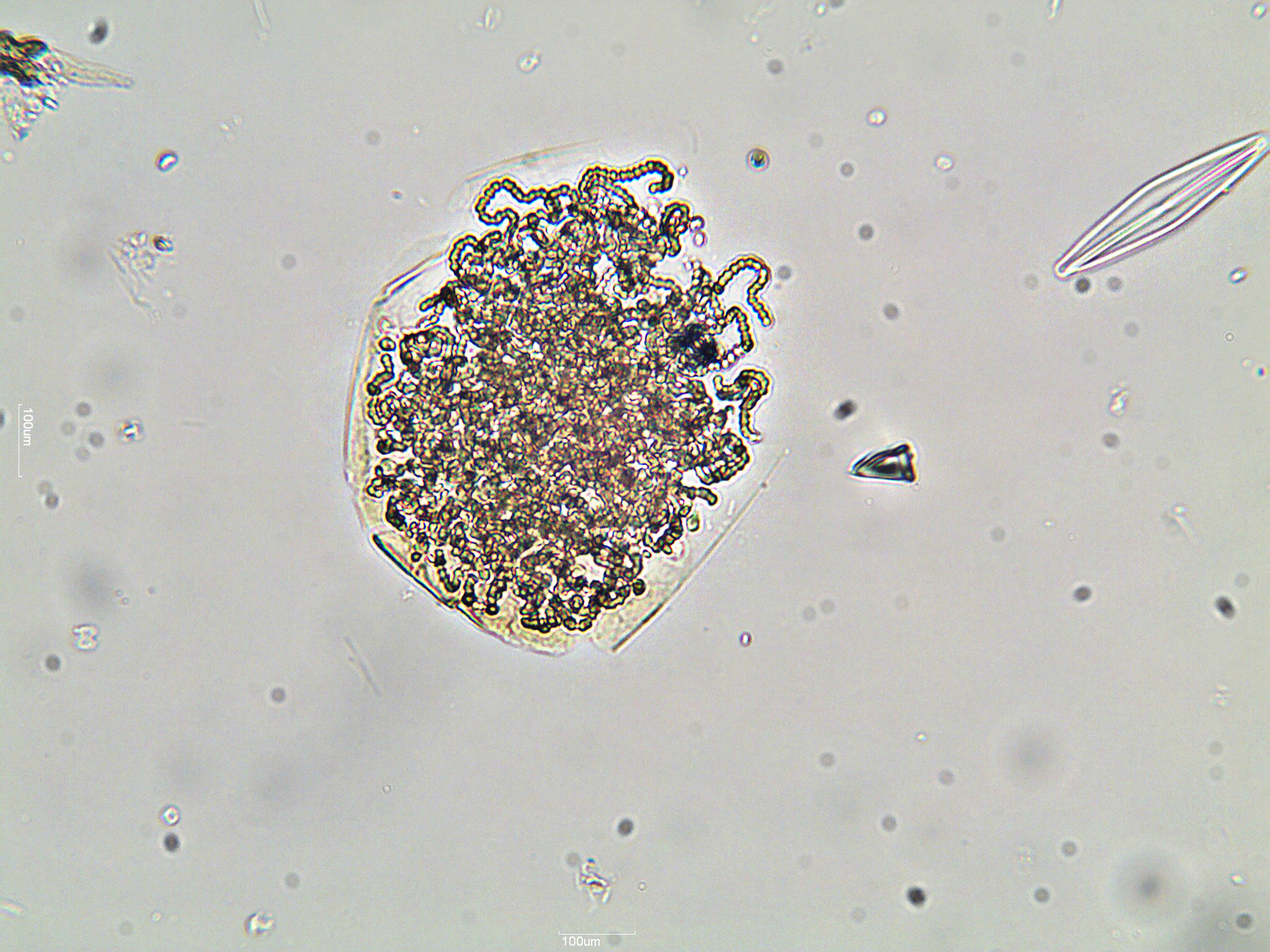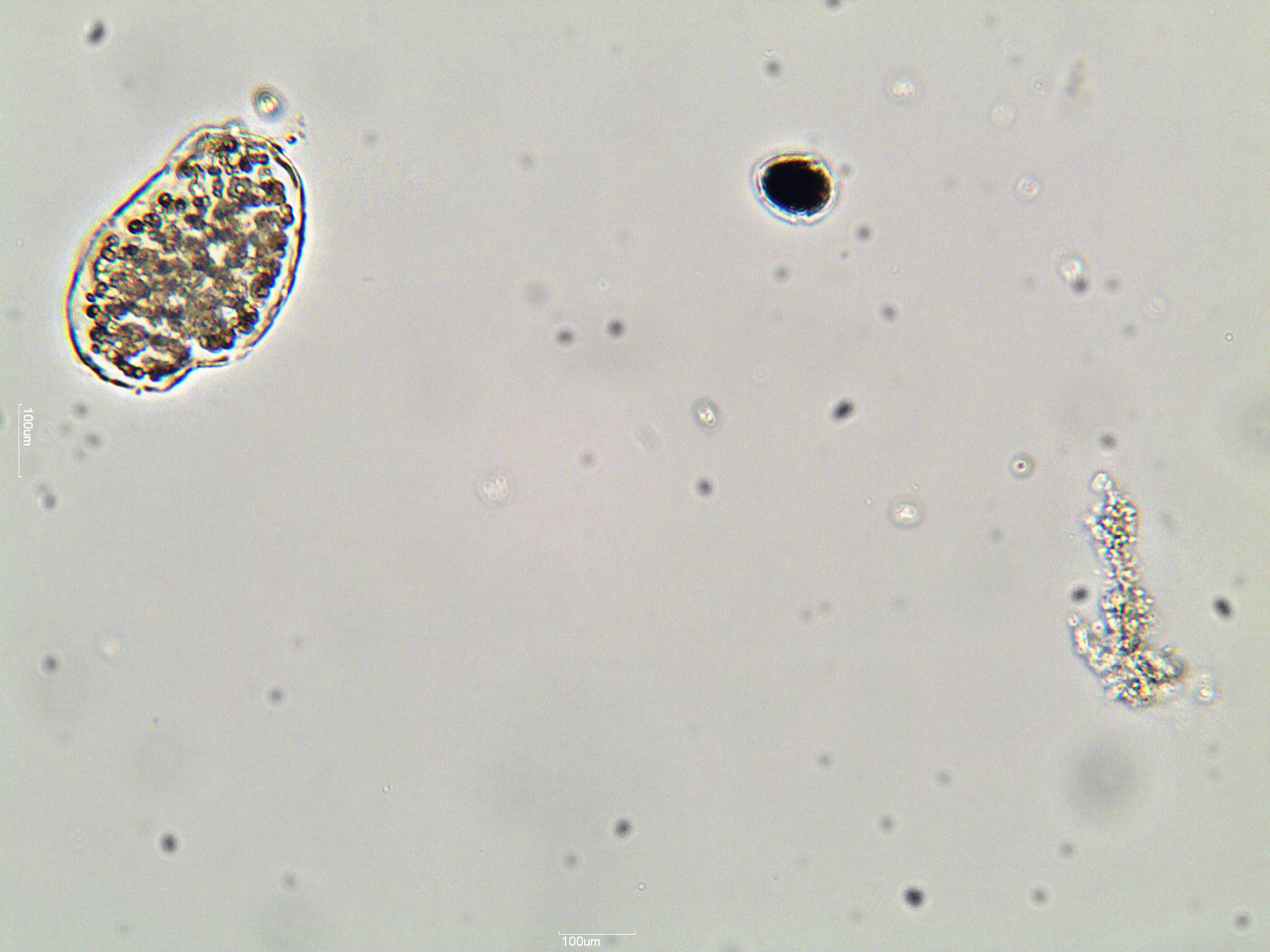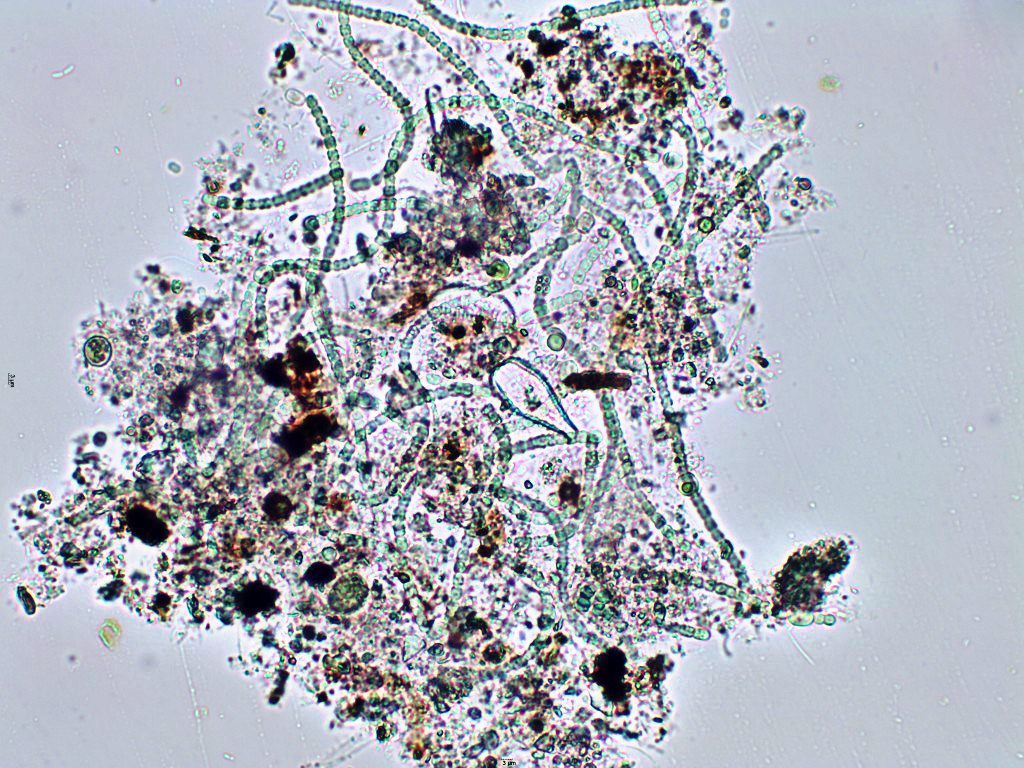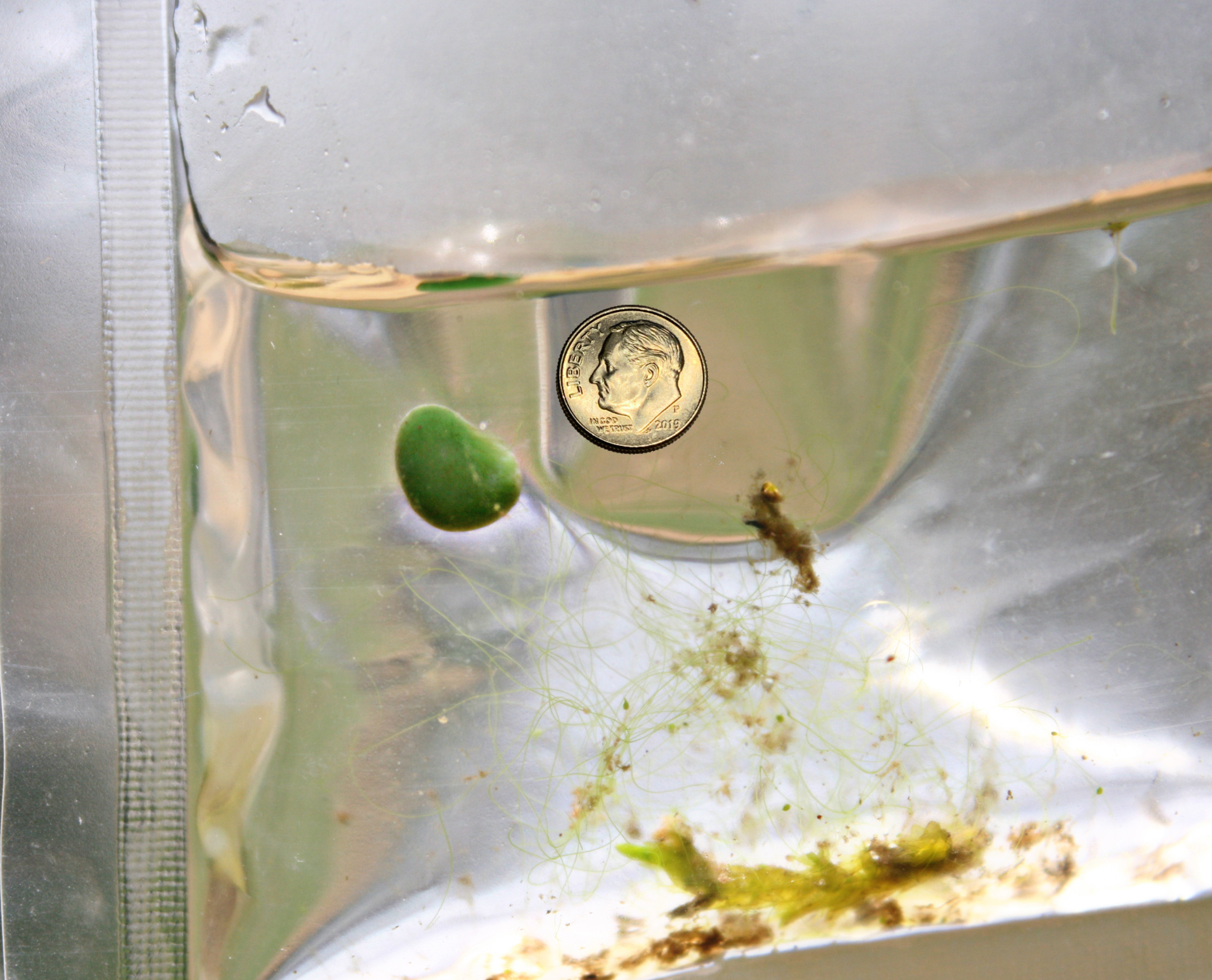Nostoc Vaucher ex Bornet et Flahault, 1888
Key # 21
1.) Classification: Order Nostocales, Family Nostocaceae. More than 200 species are
described. Some species in the genus Nostoc have been reclassified into the genus
Desmonostoc (Johansen et al. 2014). With more than 200 species and enormous
diversity, revision seems probable. The name Nostoc comes from Philippus Aureolus
Theophrastus Bombastus von Hohenheim (Paracelsus), 1493–1541. He was a
well-traveled and iconoclastic physician, chemist, and philosopher, and one of the
first systematic botanists. He was (in)famous for innovations and a rebellious attitude.
He is the father of toxicology (Borzelleca 2000). He defied the rigid science and medical
hierarchy of his day by using empirical observation of nature and patients, as well as
interviewing common people rather than relying on ancient texts. He also drank heavily
with his students and consorted with barmaids (Potts 1997). Terrestrial colonies of Nostoc
were just black crusts to fifteenth-century peasants. But, after rewetting by rain, they
suddenly became slimy, green masses called Sternschnuppen—shooting stars. Paracelsus
coined the term Nostoch for these masses, combining Nosthryl (Old English for “nostril”)
and Nasenloch (German for “nostril”). He also had a pungent observation,
“Nostoch . . . pollution of some plethorical and wanton Star, or rather excrement blown
from the nostrils of some rheumatick planet.” This is a play on words with the part of the
human anatomy prominently linked to slimy, green masses (Potts 1997).
2.) Form: Filamentous.
3.) Groups: Irregular, gelatinous mats that vary from amorphous to flat, with a firm surface
covering. The surface is smooth to warty, sticky when wet and paper-like when dry.
4.) Sheath: Fine, firm; clear to brown. With age, it becomes confluent with colonial sheath.
5.) Filaments: Isopolar, moniliform, long, irregularly coiled, clustered at colony periphery.
6.) Cells: Variable in shape/size; cylindrical to spherical, with obvious crosswall constrictions.
Heterocysts: Non-green; more spherical and larger than vegetative cells. They are
solitary, terminal or intercalary; their occurrence depends on reduced nitrogen availability.
Akinetes: Larger, oval to ellipsoidal, develop singly or in rows near/between heterocysts.
Aerotopes: Absent.
7.) Color: Varies from yellowish brown to pale or bright blue green or olive green.
8.) Replication: Akinetes, thallus disintegration, and motile hormogonia. Hormogonia
differentiate from filaments; separate at heterocysts. Cells divide perpendicular to long
axis; no meristems.Nostoc is divided into subgenera based on their distinctive cycles.
9.) Habitat: Diverse; benthic, epipelic, epilithic, and epiphytic in unpolluted waters; in or
on desert to subpolar soils. They are nitrogen-fixing endophytes in many organisms.
10.) Similar genera: Anabaena, Anabaenopsis. Both moniliform with intercalary heterocysts.
Nostoc akinetes are not adjacent to their heterocysts, but
Anabaena and Anabaenopsis akinetes are adjacent to their heterocysts.
Nostoc sheath is obvious and firm, Anabaena sheath is neither, Anabaenopsis has none.
Nostoc and Anabaenopsis have curled filaments, but Nostoc filaments are much longer.
Anabaena filaments are generally straighter, less curved if at all.
11.) Toxins: Anatoxin-a, microcystins, and nodularins are reported.
12.) Distinguishing features: Nostoc species have long, coiled, moniliform filaments, a
conspicuous sheath, and intercalary heterocysts. They are in thick mats that are not
“hairy”; that is, the individual filaments cannot be readily seen protruding from the
mat edges. MAN

Nostoc_01
Nostoc is a filamentous cyanobacterium that forms irregular gelatinous colonial
mats. The coiled, moniliform filaments have their own fine sheath that, with age,
merges with the colonial sheath. They tend to cluster at the edge of the colony.
Heterocysts are conspicuously different and are larger than the vegetative cells.
Nostoc inhabits a wide variety of habitats: terrestrial, epiphytic and even as an
N2-fixing endophyte. This specimen was found in a shallow water sample
from Laguna El Junco, a crater lake on San Cristóbal Island in the Galápagos
Islands, Ecuador, taken in 2014. 400X Magnification.

Nostoc_02
Same information as Nostoc_01

Nostoc_03
Nostoc is a filamentous cyanobacterium that forms irregular gelatinous colonial
mats. The coiled, moniliform filaments have their own fine sheath that, with age,
merges with the colonial sheath. They tend to cluster at the edge of the colony.
Heterocysts are conspicuously different and are larger than the vegetative cells.
Nostoc inhabits a wide variety of habitats: terrestrial, epiphytic and even as an
N2-fixing endophyte. This specimen was found in a shallow water sample from
Green Acres Lake, Cincinnati, OH, USA, taken on June 22, 2018.
400X Magnification.

Nostoc_04
Nostoc can be found as gelatinous, macroscopic colonial balls. This colony was
found in a damp terrestrial habitat in NW Pennsylvania, USA, near Lake Erie
on April 30, 2022, during the 2022 Algal Foray. Photo courtesy of Jessica
Nienaber. Image of dime added in editing afterward to approximate scale.